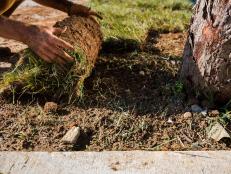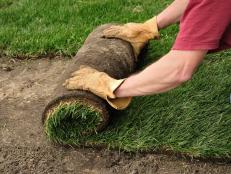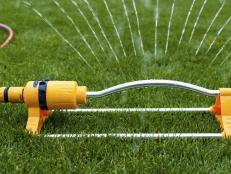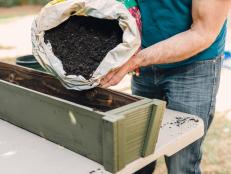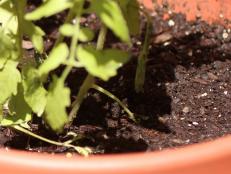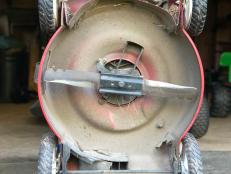How to Prepare Clay Soil for Sod
If you’ve got a heavy clay content in your soil, it can be challenging to get fresh sod to take root. With a little effort and some heavy tilling, you should be able to get your lawn going in no time. Here’s what you need to know.

Shutterstock/iko
Prepare your clay soil for sod by tilling and adding organic material. Finish with a layer of topsoil and grade the surface smooth with a steel rake.

Get a Soil Test, Save Some Headache
Soil preparation is the critical first step in getting your sod to take root. The work you put in prior to putting the sod down sets the stage for your lawn’s health for years to come. Once you’ve put sod over your soil bed, making improvements to its conditions is costly and time consuming, if not downright impossible in some cases. So, it’s worth taking the extra time to take a soil sample and send it off to your local extension agent for a test. This will provide you with tons of information about your soil’s basic composition, pH levels and nutrient deficiencies. They can even send you some corrective actions that you might need to take before laying sod. Let them know that you want your soil tested for turfgrass and not for agricultural purposes because turfgrass needs a different soil composition. Once you're armed with a good soil test, you'll be able to start adding in materials to help break down the clay component and allow your lawn to take root.
Now It’s Time to Till
Using the recommendations from your soil test, call your local landscape supply company and order an organic soil mixture to create conditions ideal for new sod. For a large area, it's highly likely that you’ll need to have it delivered to your location. Your local landscape supply should be able to deliver materials and deposit them in a location of your choosing.
You’re going to have to till your clay soil aggressively to a depth of about six inches. If you’re dealing with hard clay, you’ll want to rent a tiller that’s up to the task. Talk with your local equipment rental company and let them know what you’re up against. They’ll be able to recommend a tiller that can handle the job and make your work easier.
While you’re tilling, you’ll need to mix in your compost to help create good growing conditions. Make sure to work all of the material into the soil vigorously and try to break down as much of the clay as you can while you’re tilling. If your soil still feels heavy or sandy once you’ve finished, you might need to add more organics to it until it lightens up. Once you’re finished, you can add a layer of topsoil and grade your surface smooth with a steel rake. Make sure to remove any excess debris like rocks or large sticks before laying down turf.
Fertilize and Start Laying Sod
Next, you’ll want to lay down an application of turf starter fertilizer that’s right for your sod variety. Your local garden center should be able to assist you with the right fertilizer mixture for your lawn type. Now you’re ready to lay your sod. Remember to water your sod as soon as you have an area large enough for your sprinkler to cover. Sod dries out quickly, so don’t wait until you’re finished to start watering! Check out our tips for watering tips and care advice for your new sod to make sure your lawn stays healthy, strong and weed-free.






